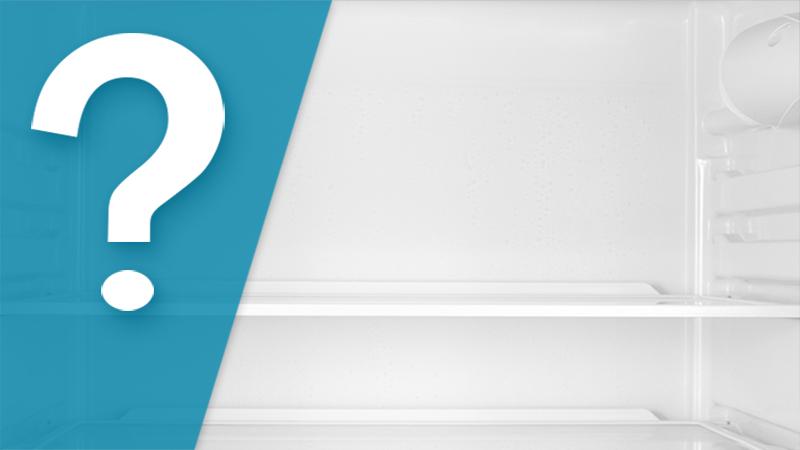Temperature Mapping Worst-Case Scenarios in Refrigerators
We recently received a question from a pharmaceutical customer on re-qualifying a refrigerator that had been repaired. This customer was checking in on his approach…
Dear Vaisala,
I’ve read some of the articles the team at Vaisala have posted on worst-case scenarios for controlled temperature units (CTUs). I’ve also looked at the ISPE guides on this but I still find it difficult to determine the “worst case” for a refrigerator. Currently our site procedures for qualifying CTUs include performing both empty/loaded mapping studies on new CTUs. But, what I need to do is execute a re-qualification on a unit that was repaired. I was trying to determine the worst-case, and I’d prefer to do just one set of studies instead of both empty/loaded.
For background, the repaired unit uses positive forced-air circulation to maintain temperature uniformity. To me this suggests that the loaded condition might pose more of a challenge to uniformity since the objects would be obstructing airflow. At the same time, as I mentioned before, the room, and specifically the location of the unit is warmer when compared to other locations in the room. Several incubators are pumping out heat and the “L” shape of the room combined with poor circulation creates a warmer area around the unit.
The room typically reads around 28-30 degrees Celsius whereas the other areas are below 25°C. The refrigerator has a 2-8°C operating set point. One thing I’m wondering: does the empty condition pose a bigger challenge because it’s constantly trying to maintain set-point with no thermal load to stabilize the temperature inside the chamber?
For our ultra-low freezers, I know that the empty condition is definitely worst-case, but in the repaired refrigerator, the worst-case has been a little harder to feel certain about, especially since the temperature inside versus outside are not as extreme as Ultra-lows. I’m trying to weigh these factors to ensure that my understanding is solid. Please let me know what you think of this situation and I appreciate any guidance because this is a topic that appears to have different approaches and rationales.
Our Reply:
First off, it’s excellent practice to take a worst-case scenario into consideration. This is an important precept of validation. In GxP industry, we note that most people settle for a “reasonable challenge scenario,” but often they amount to the same thing. I believe you are correct that a refrigerator that cools by convection (forced air circulation) has the biggest challenge when the airflow is blocked (as in fully loaded conditions). You are also correct that fully loaded units have more thermal mass and maintain more stable temperatures, representing a less challenging case.
One solution is to fill the refrigerator with empty low-mass containers (boxes, plastic bottles, etc.) to create the challenge of airflow blockage, without the effect of adding thermal mass.
But, here we find the problem: If you are going to fully load the fridge with only a simulated load to understand airflow, you need to know how “full” is defined for this fridge. This will be a combination of how it is used (it may only be used for a certain size bottle, or a certain sized box), as well as the design constraints (there will be a manufacturer’s recommended full load).What is a good idea here is an SOP on how the fridge is loaded.
For a reference on limits to loading CTUs, we have some regulations/guidance that weigh in the topic. For instance, there is the French standard NF x 140 that recommends load items be placed no closer to the walls than 10% of the full dimensions. That sounds weird… It means that if the refrigerator is 80 cm wide, then no load items should be within 8 cm of the left/right walls.
Same goes for front/back and top/bottom. Whatever happens, you are way ahead of the curve. Most people just map a chamber or room in its use condition once a year and leave it at that. However, that doesn’t mean this is never questioned. Having thought out your mapping studies goes a long way with auditors. Typically, if an auditor disagrees with how you’ve performed a study, or with your rationale, they will often tell you that they simply want to see your process improved. This is way better than their typical response when they find out you didn’t map at all, or had no rationale supporting your approach.
What’s important is that you are documenting a deep understanding of the environment you are qualifying. And you realize that a repair may in fact give you a chamber that functions somewhat differently than it did originally. This attention to detail and attempt to ensure you have a qualified environment is your best bet to prove the products stored are done so according to specifications.


I need a system to register temperatures in order to qualify temperatures and humidity control Led áreas and equipements.
Please send me informativo about your offer about.
I offer qualification services for pharmaceutical companies.
Thanks.